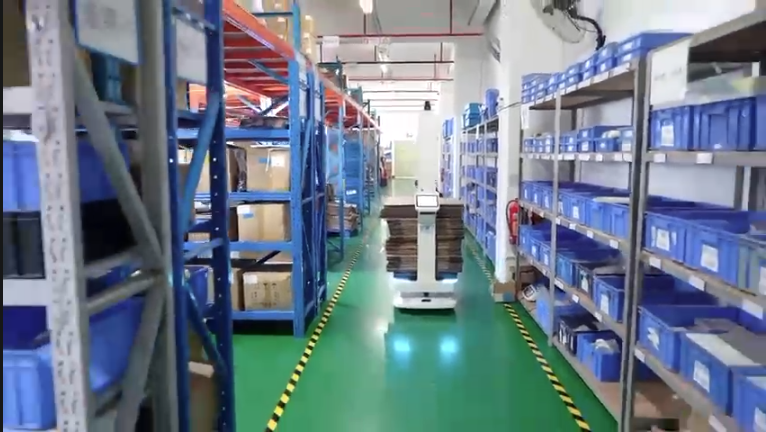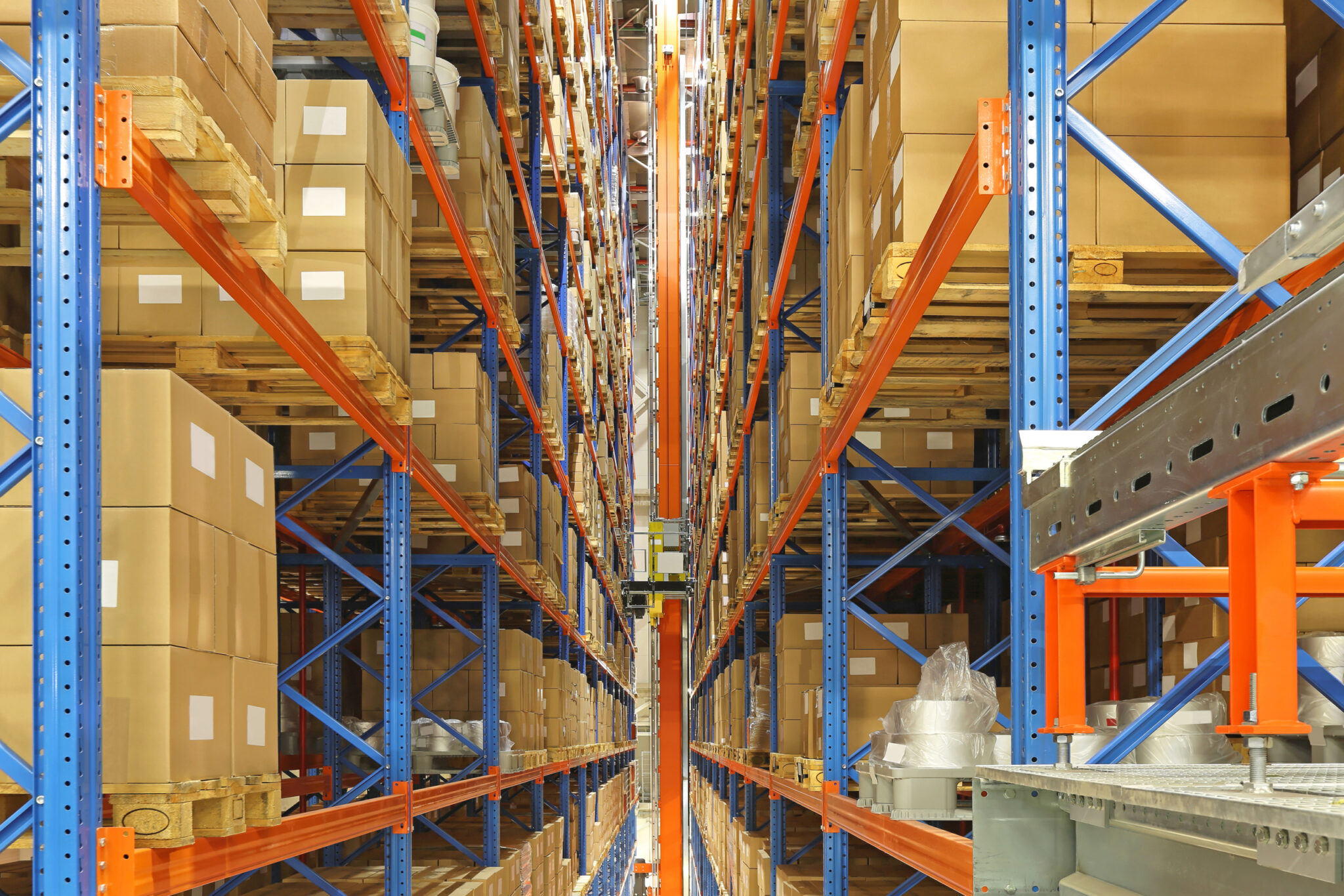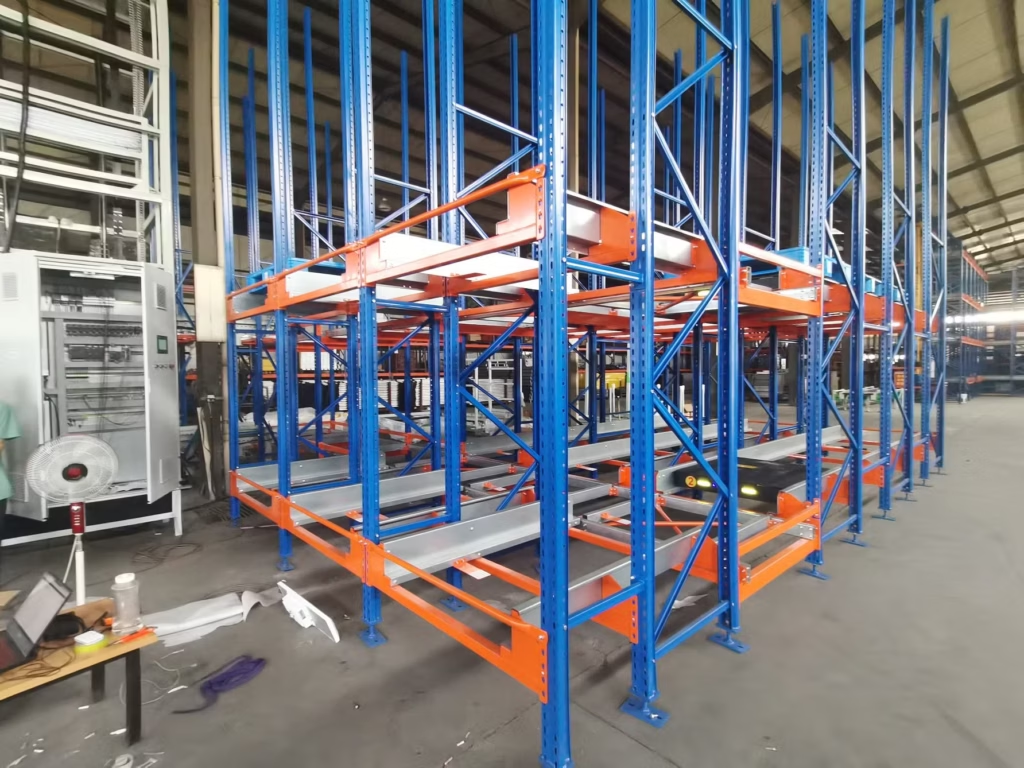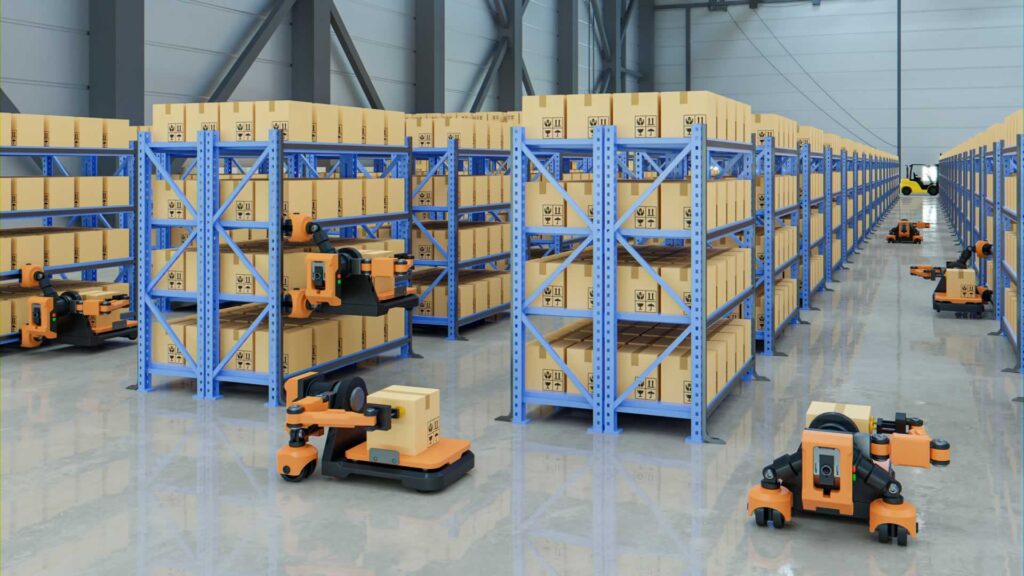ASRS
Automated Storage and Retrieval System
An Automated Storage and Retrieval System (ASRS) is a computer-controlled system used in warehouses and manufacturing facilities for automatically placing and retrieving loads from defined storage locations. It optimizes space utilization, increases efficiency, and reduces human error by using cranes, shuttles, or carousels to manage inventory. ASRS systems are ideal for high-density storage environments and are often integrated with warehouse management systems (WMS). They reduce labor costs, enhance safety, and allow for real-time inventory tracking. These systems are commonly used in industries such as automotive, pharmaceuticals, e-commerce, and food processing for fast and accurate material handling.


Autonomous Mobile Robot (AMR)
An Autonomous Mobile Robot (AMR) is a self-navigating robotic vehicle capable of understanding and reacting to its environment using AI and sensors. Unlike AGVs, AMRs do not require fixed paths; they adapt routes dynamically to avoid obstacles and optimize travel time. They are used in warehouses, factories, and hospitals for transporting goods, parts, or equipment. AMRs improve flexibility, reduce bottlenecks, and increase productivity. Integrated with IoT and warehouse software, they provide smart, scalable, and safe material-handling solutions.
Stacker Crane
A stacker crane is an automated machine designed to handle and transport pallets or large items within high-bay racking systems. It moves along an aisle between racks, using a telescopic fork or shuttle to store and retrieve items at various heights and depths. Controlled by a warehouse management system, stacker cranes ensure high throughput, precision, and safety in warehouse operations. They are widely used in ASRS setups, cold storage, and high-density storage facilities requiring minimal human intervention.


Shuttle Robot System
A shuttle robot system uses autonomous shuttles to transport goods within multi-level racking structures. Each shuttle operates on a specific level, retrieving and delivering totes or cartons to lifts for vertical movement. This system enables high-speed order picking, scalable capacity, and flexible storage configuration. Controlled by intelligent software, shuttles can adapt to varying throughput requirements. Shuttle systems are particularly beneficial in e-commerce, retail distribution, and spare parts storage, where quick order fulfillment is essential for operational efficiency.
Palletizing Robots
Palletizing robots are automated machines designed to stack products onto pallets in a precise, consistent, and space-optimized manner. Using advanced vision systems and programmable logic, these robots can handle various shapes and sizes of boxes, bags, or containers. They improve packaging speed, reduce workplace injuries, and enhance load stability. Palletizing robots are commonly used in manufacturing plants, warehouses, and distribution centers, especially in high-volume operations. Integration with conveyor systems and ASRS ensures smooth, automated end-of-line handling.


Warehouse Management Robots
Warehouse management robots are autonomous or semi-autonomous robots used to handle tasks such as picking, sorting, transporting, and inventory tracking within a warehouse environment. These robots, including AGVs (Automated Guided Vehicles) and AMRs (Autonomous Mobile Robots), work alongside or replace human workers to improve operational efficiency, reduce errors, and accelerate order fulfillment. Integrated with Warehouse Management Systems (WMS), these robots can optimize workflows, manage space effectively, and operate 24/7. Common in e-commerce, retail, and logistics sectors, warehouse robots contribute to faster deliveries, accurate stock management, and reduced labor costs while supporting scalable and flexible warehouse operations.

